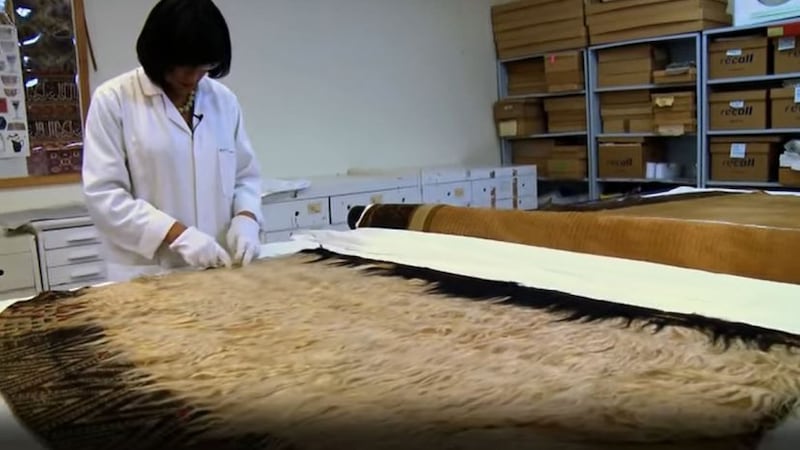Dr Rangituatahi Te Kanawa worked as a textile conservator at Te Papa for 20 years. Credit / Museum of New Zealand Te Papa Tongarewa
Research into customary Māori clothing dyes could help uncover the origin of garments worn in pre-European Aotearoa and reconnect them with the wearers’ descendants, says Dr Rangituatahi Te Kanawa.
Dr Te Kanawa (Ngāti Maniapoto) worked as a textile conservator at Te Papa for 20 years and recently completed her PhD in Museum and Heritage Studies at Victoria University, Wellington, which issued a statement Thursday.
Dr Te Kanawa at Te Papa in 2012. Source / YouTube
Deterioration of the dyed black fibre in early kākahu was the impetus for her research, which involved reproducing clothing dyes using traditional techniques. This deterioration was caused by the iron-tannate dye, a mix of tannins and iron-rich mud.
Dr Te Kanawa collected samples of iron-rich mud from different geographical locations and, using traditional techniques, dyed the muka (flax fibre) black. Through this process, she was able to differentiate by colour value or hue between various locations.
For example, the mud collected from her family site in the central west North Island produced a blue-black, while on the east coast a red-black was found.
She says the origin of more than 90 percent of the taonga kākahu (treasured garments) stored in museums is not known, but hopes her research will not only help establish where a garment was from but revitalise customary techniques and contribute to the conservation and display of Māori textiles.
“I’d like to promote the use of traditional practices and resourcing materials, and build a knowledge base of cultural practices, reconnecting to Te Taiao (the natural world) and indeed Te Ao Māori,” Dr Te Kanawa says.
Dr Te Kanawa is from a family of traditional weavers. Her late mother Dr Diggeress Rangituatahi Te Kanawa and late grandmother Dame Rangimārie Hetet were both recognised for their contribution to Māori weaving traditions.

